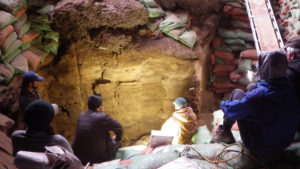
Science Advances—Fecal biomarkers confirm that fossilized feces discovered in Oregon’s Paisley Caves originated from humans, with some samples dating back more than 12,000 years, according to a new study. While previous mitochondrial DNA (mtDNA) analyses suggested the specimens came from some of the earliest humans to occupy the Americas, Lisa-Marie Shillito and colleagues provide greater certainty about the ancient turds’ identities by analyzing lipid biomarkers, which are less sensitive to contamination, although they provide less detailed information. The researchers conclude that both methods – analyzing mitochondrial DNA and lipid biomarkers – may be used in tandem as scientists search prehistoric poo for clues about when the first people arrived in the Americas, how they got here, and how they adapted to its varying terrain. Dung samples such as those from Paisley Caves can help fill in the blanks about the lives of ancient humans when skeletal remains are scarce. Earlier studies of some of the dung samples were called into question since some of the mtDNA recovered from them could have leached into the samples from later occupants of the cave who defecated there, or it could have been derived from other species that used the cave. To explore whether lipid biomarkers in the fossilized feces could help solve the mystery of who deposited them in the cave, Shllito et al. sampled 21 specimens that were previously identified through mtDNA analysis to determine their sterol and bile acid content. They next compared lipids derived from one dung sample with lipids from the surrounding sediment, finding distinctly different distributions that suggest minimal leaching occurred between the dung and its environment. Ultimately, the researchers found that the identities of 13 of the fossilized feces agreed with previously reported classifications based on mitochondrial DNA, the majority of which came from humans. The oldest dated back to about 12,200 years ago, demonstrating that humans have occupied the Paisley Caves since at least that time. The findings support the theory that humans first settled in America before the arrival of the ancient Clovis people, who were long thought to be the ancestors of the indigenous peoples of the Americas.
_______________________________
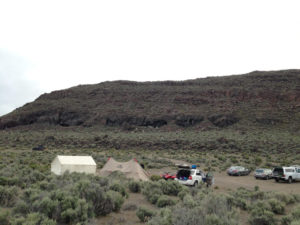
View of the Paisley Caves outcrop from the base camp.Dr. John Blong
_______________________________
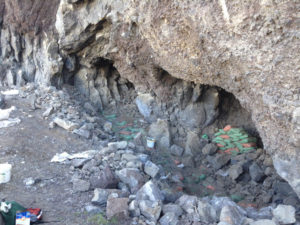
Outside the Paisley Caves entrance. Dr. John Blong
_______________________________

The excavation team discussing the sediments. Dr. John Blong
_______________________________
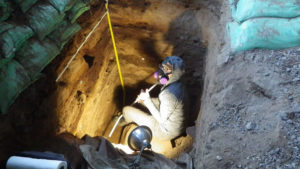
Dr. Lisa-Marie Shillito collecting. Dr. John Blong
_______________________________
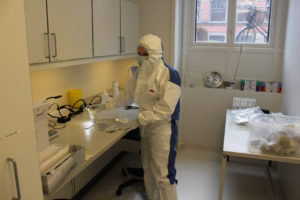
Dr. Helen Whelton working on samples in the lab. Dr. John Blong
_______________________________
Article Source A Science Advances news release. Science Advances is published by AAAS, the nonprofit science society.
_______________________________
Advertisement





